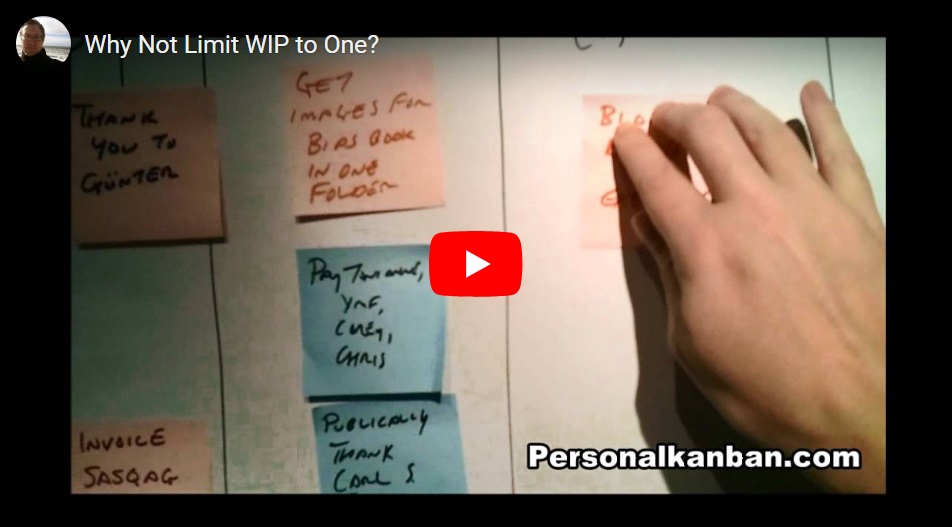Why Limit WIP 2: Why not a WIP of Just 1?
originally written by Jim Benson, Tonianne DeMaria BarryOur summary and key takeaways
As Tonianne and Jim pointed, it may seem that because of the simplicity of the Kanban idea (visualize work and limit how much is in progress) there is not much more to consider here. But there is!

What does In Progress really mean?
To get the WIP limit set right, there are some things that need attention. What is work in progress exactly? Is this what you have in front of you and look at? Or is it what your thoughts are busy with processing? The amount of things processed by the brain is a lot larger than what you can physically do at any one time. This is indicative of why a WIP limit of 1 may not be ideal. In order for your Kanban to represent the actual work you do, it needs to visualize what is going on in your head as well as on your desk or computer.
The WIP of 1 issue
The problem with a WIP limit of 1 is, that most people working with it tend to move tasks back and forth from the Working column, as it is often impossible to complete a task without some waiting time or consultation. It means we're moving the "worked" task back and forth anyway, as it's not likely to get completed in one go.
The reason
To facilitate for the troubling psychological Zeigarnik Effect, which leaves us unsettled and anxious to complete an unfinished task, it makes more sense to keep a larger WIP limit and just activate one of the progressed tasks at one time, while others remain in the In Progress lane and are not allowed to be moved back until finished – a one way only workflow. This produces a much better incentive for actually completing the work and keeps the mind calm.
The worst thing you can do is make a column for incomplete tasks, as this will only encourage you to place more items in there, resulting with an overall decrease of completed tasks. So, try a WIP limit of 2 or 3, but rather give up on the 1.